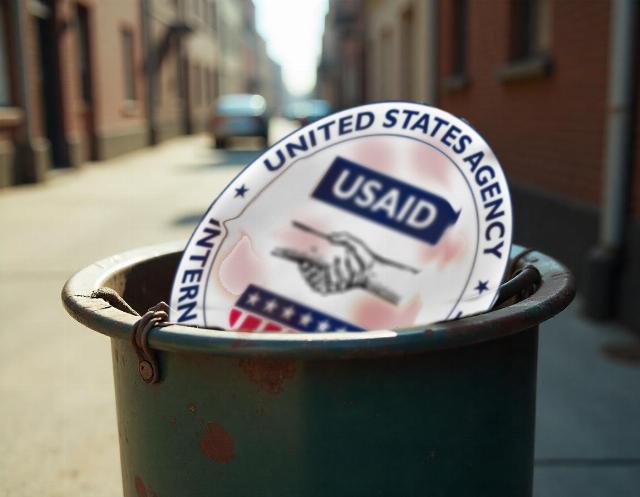Trump’s decision to end USAID is constitutionally and legally solid
A cynic might assume that Trump dismantling the USAID would be just another blunder quickly overturned by the courts. But beneath Trump 47’s seemingly brash and impetuous exterior lies a master political strategist and negotiator—one almost unrecognizable from Trump 45.
Trump has set his sights on USAID because he knows it has no legal foundation to stand on. The Foreign Assistance Act of 1961 (FAA) merely granted the President broad discretion to structure foreign aid programs as he saw fit. President John F. Kennedy exercised this discretion through Executive Order 10973, formally establishing USAID as an administrative agency under the State Department.
The legal distinction here is crucial: Congress authorized the President to create an agency, but it did not mandate its creation by statute. USAID was established solely through an executive directive, making it purely an executive entity, subject to modification—or termination—at the discretion of the sitting President. The same presidential authority that created USAID inherently includes the authority to dissolve it.

Image by Andrea Widburg
Critics will argue—if given the chance—that USAID, having existed for decades and received continued congressional appropriations, has become “institutionally entrenched” and, therefore, cannot be unilaterally dismantled. But this argument is nothing more than a legal fiction with no constitutional basis.
There is no doctrine of institutional entrenchment in the U.S. Constitution, federal law, or Supreme Court jurisprudence. An agency’s longevity or political importance does not create a constitutional requirement for its continued existence.
In fact, historical precedent confirms that even longstanding federal agencies created by executive order can be dismantled, merged, or repurposed at the discretion of the executive or legislative branches. Examples include the Office of Emergency Management (OEM), the Federal Emergency Relief Administration (FERA), and the Civilian Conservation Corps (CCC)—to name a few.
Furthermore, no Supreme Court ruling limits a President’s ability to rescind an executive order that established an agency under delegated rather than statutory congressional authority. The notion that continued congressional funding somehow requires the agency’s survival is equally flawed. The President holds broad discretion over budget execution, and mere appropriations do not compel the executive to maintain an agency beyond its policy priorities.
But legal principles aside, once Trump acts, there is literally nothing anyone can do—short of Congress passing a law to make the USAID statutory and then mustering a two-thirds majority to override his veto.
Even better, no one has standing to sue. The standing doctrine requires that a plaintiff must demonstrate injury-in-fact, that is, a direct and concrete injury; that the injury was directly caused by the defendant; and that a court ruling can correct the harm.
No party—whether Congress, USAID employees, foreign aid recipients, or advocacy groups—can meet the criteria to sue over the USAID’s dissolution. The agency’s closure does not cause any specific legal injury that meets the constitutional threshold for standing.
Congress lacks standing to sue the executive over policy decisions. In Raines v. Byrd (1997), the Supreme Court ruled that members of Congress cannot sue over executive actions unless they suffer a direct and personal injury—which is not the case here.
USAID employees may attempt to claim damages from job loss, but losing a government position does not grant standing to challenge the agency’s closure, which falls within the executive’s lawful authority. Federal employees have no constitutional right to permanent employment, and in Dalton v. Specter (1994), the Court ruled that closures of military bases were not reviewable as they are political rather than judicial questions.
Foreign aid recipients have no constitutional right to U.S. funding and, therefore, have no standing in federal court. Similarly, advocacy groups lack any direct legal injury from the agency’s closure and cannot sue on ideological grounds alone.
Even if a challenge somehow made it past the standing issue, sovereign immunity would bar the case from proceeding.
The federal government cannot be sued unless it waives its sovereign immunity, which it rarely does. Most lawsuits against federal agencies proceed under the Administrative Procedure Act (APA) 5 U.S.C. § 702, which allows challenges to ongoing agency actions.
If USAID were abolished, there would be no ongoing agency actions to challenge; in fact, there would be no agency at all.
The unilateral abolition of USAID by executive order is both legally sound and politically enforceable. Since USAID was created through executive discretion under a general congressional authorization, it remains subject to that same discretion. There is no constitutional precedent requiring its continued existence, and claims of institutional entrenchment are baseless in U.S. constitutional law.
Even if legal challenges were attempted, no party has standing to bring suit, and sovereign immunity would prevent the courts from hearing the case. The dismantling of USAID is an irreversible executive action with no legal recourse—a de facto fait accompli by the wily Trump 47.
Huck Davenport is a pseudonym.





